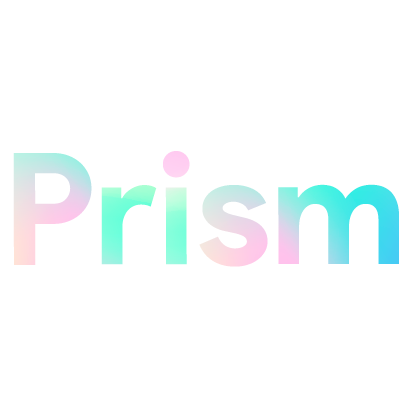Abbie Bannish
Experience Design
Jacob Beck
Production Design, Developer
Helen Li
Website UI/UX, Social Media Content Design
Chi Tran
Experience and Visual Design, Social Media Content Design, Video Production
Max Tan
Production Design. Video Production
Rachel Raymond
Project Manager, Experience Design and Research, Social Media Content Design

ABOUT PRISM
Prism Studios is a group of designers passionate about empathy, diversity, and collaboration not as ideals, but a lens in which to creatively push the boundaries of design. We are interested in using our capstone design space not as a means to an end, but as a journey of discovery. These shared ideas inspired us to examine the intersections between space, technology, and people. We as a design team feel that the average person’s ability to communicate their emotions as self-expression or as part of self-actualization can be a barrier between many people and their relationships with themselves, each other, and the outside world. COVID-19 exacerbated this struggle by blocking the ability to receive external connectivity and communication from the outside world. This separation of the average person from their support networks and the world has created a situation where many are looking to find new avenues of expression and connection. These thoughts bring us to the following question: using technology, how can the experience and communication of human emotions be transformed via fun? Prism looks to allow people the ability to express and decompress their emotions through the use of play within art, psychology, and design. By utilizing voice activation to control the experience of light and color, Prism creates an interactive therapy experience that encourages people to find fun through the expression of their thoughts and feelings, both at home and within museum settings. ‘
In order to achieve success within this project, we as a design team hope to employ the human-centered design process. We will first (1) empathize as a means of being able to examine the problem space within the context of who will be interacting with the space. Then we will (2) define what we feel is the perspective of the design as according to how we define the users of the design space. This will allow us to (3) Ideate on the best design as a solution to our perceived problem and questions, within the context of our team point of view. These designs will go through (4) prototypes, which we are then able to (5) test, receiving feedback that allows us to iterate and go through this process (1-5) again. The final step (6) of planning and implementation applies to the specific life cycle of this project within an academic environment, meaning that it must be presented within a “final” stage for our academic careers, but can be carried on outside of our school lives.
We hope that through our project we’re not only able to shine a light on being in touch with one’s emotions but to help facilitate joy in the face of a global crisis.
